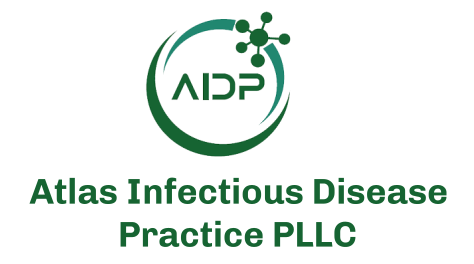Disclaimer: Early release articles are not considered as final versions. Any changes will be reflected in the online version in the month the article is officially released.
Author affiliation: Centers for Disease Control and Prevention, Atlanta, Georgia, USA (K. Benedict, A. Jordan, J.A.W. Gold, D.J. Smith, T. Chiller, I. Hennessee); University of Iowa Carver College of Medicine, Iowa City, Iowa, USA (P.M. Polgreen, S.E. Beekmann)
Cryptococcosis is a severe disease caused by the environmental fungus Cryptococcus. In the United States, an estimated 3.4–6.5 cases/100,000 population and nearly 5,000 cryptococcosis-associated hospitalizations occur each year; most cases are associated with immunosuppression (1,2). Approximately one third of patients with cryptococcosis have HIV (1,2).
Cryptococcal antigen (CrAg) testing is a simple, rapid, inexpensive, and highly accurate diagnostic method. It can detect early asymptomatic cryptococcal infection in blood weeks to months before symptom onset, enabling early treatment and resulting in less illness and death. US federal guidelines recommend routine CrAg screening for persons with HIV and CD4 counts ≤200 cells/mm3 (3). However, few data exist about CrAg screening practices in the United States. To gain preliminary insights about CrAg screening use and identify potential barriers, we polled members of the Emerging Infections Network (EIN), a provider-based network supported by the Centers for Disease Control and Prevention and the Infectious Disease Society of America (4).
EIN emailed a link to an online poll (https://ein.idsociety.org/surveys/survey/181/) 3 times during October 30–November 15, 2024, to its >3,100 network members. We analyzed percentages of responses to questions about CrAg screening utility for patients other than those with advanced HIV; CrAg blood test use for adult and adolescent patients with advanced HIV in 4 clinical scenarios (newly initiating antiretroviral therapy [ART], reinitiating ART, experiencing ART failure, or seriously ill regardless of ART status); barriers to obtaining CrAg testing; and management of patients with a positive CrAg screening test.
In total, 215 EIN members responded. Most were infectious disease physicians who primarily care for adult patients (91%) and practice at university or teaching hospitals (57%) (Table 1). When asked whether patient groups other than those with advanced HIV should routinely receive CrAg screening, 40% of respondents said no, 33% said yes (solid organ or stem cell transplant patients were often mentioned in free-text responses), and 27% were unsure.
Of the 215 EIN members who responded, 181 (84%) reported caring for adult or adolescent patients with HIV in the past year. Those respondents participated in the remaining survey questions. The percentages of respondents who reported always or often obtaining CrAg screening for patients with HIV, by CD4 cell count, were as follows: newly initiating ART, <100 cells/mm3, 63%; <200 cells/mm3, 33%; reinitiating ART, <100 cells/mm3, 35%; <200 cells/mm3, 17%; experiencing ART failure, <100 cells/mm3, 20%; <200 cells/mm3, 8%; and seriously ill regardless of ART status, <100 cells/mm3, 77%; <200 cells/mm3, 68% (Table 2).
The primary reported barriers (respondents could choose >1 barrier) to obtaining CrAg screening among patients with HIV and CD4 <200 cells/mm3 were uncertainty about the benefit (42%) and uncertainty around CrAg screening recommendations (32%). Ten percent expressed concern about delaying ART, 2% reported CrAg test unavailability, and 42% reported none of the specified barriers. When asked about managing a patient with a positive CrAg screening test result (respondents could choose >1 answer), respondents noted they would perform lumbar puncture and order cerebrospinal fluid testing (79%), evaluate for meningitis symptoms (77%), obtain a CrAg titer (69%), and treat with fluconazole while awaiting cerebrospinal fluid test results (36%).
The poll of EIN members showed moderate (33%–63%, depending on CD4 count) adherence to National Institutes of Health, World Health Organization, and European Confederation of Medical Mycology and International Society for Human & Animal Mycology recommendations for obtaining CrAg screening for patients with advanced HIV who are initiating ART (3,5,6). A modest percentage of respondents (42%) was unsure of the benefit of CrAg screening. In general, limited data exist regarding US CrAg screening implementation (7). In addition, approximately 1 in 3 respondents expressed uncertainty about CrAg screening recommendations, and 1 in 10 expressed concerned about delaying ART, which might relate to general awareness of multiple guidelines but unfamiliarity with differences among them. For example, only the World Health Organization (5) and the European Confederation of Medical Mycology and International Society for Human & Animal Mycology (6) explicitly recommend CrAg screening for patients with HIV who are reinitiating ART, which was not commonly reported (17%–35%) in the poll.
Most respondents (almost 80%) reported that they typically obtain lumbar punctures and evaluate for meningitis symptoms among patients with positive CrAg screening tests, consistent with guidelines. CrAg screening utility for patients without HIV (e.g., transplant recipients) is unclear and has not been well studied (8,9); 60% of respondents indicated that the practice might be useful or that they were unsure. More research is needed regarding CrAg screening utility among patients without HIV.
A limitation of the survey is that poll respondents might not be generalizable to all US infectious disease physicians. Furthermore, results might overestimate CrAg screening use because of self-selection bias among respondents who chose to participate in the survey based on perceived importance of CrAg screening. Future surveys of CrAg screening practices among other specialist populations might be useful because of increased integration of HIV care into primary care. Our results reveal potential opportunities for improvement in advancing understanding of and adherence to CrAg screening guidelines among a sample of EIN members.
Ms. Benedict is an epidemiologist in the Mycotic Diseases Branch, Division of Foodborne, Waterborne, and Environmental Diseases, National Center for Emerging and Zoonotic Infectious Diseases, Centers for Disease Control and Prevention, Atlanta, Georgia, USA. Her research interests include the epidemiology and prevention of fungal infections.






